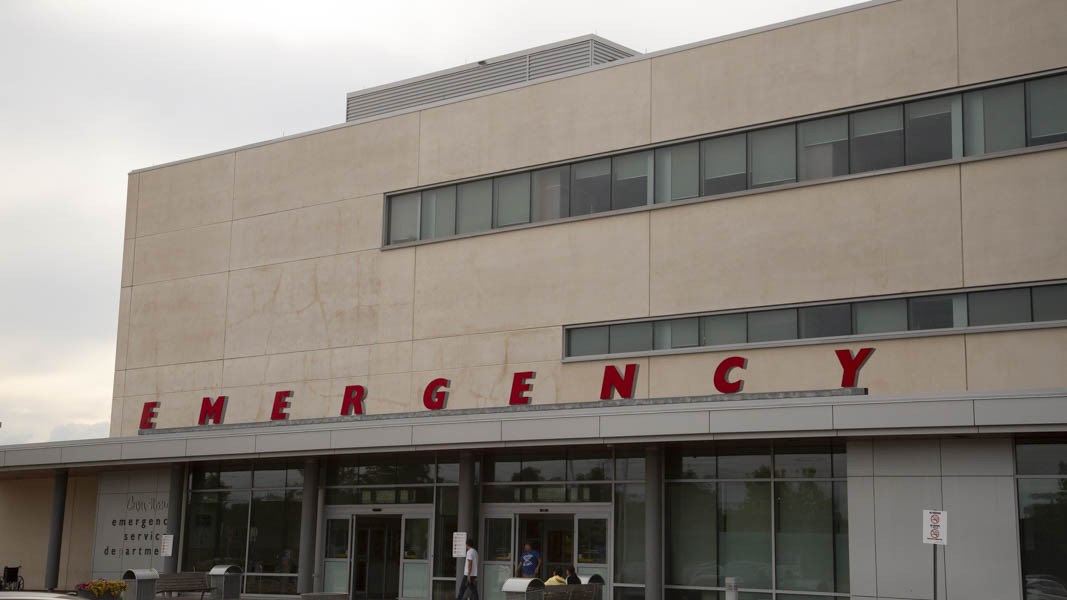
More than 3,000 patients treated in hallways at Brampton Civic Hospital last year
It is the hospital where the phrase ‘hallway healthcare’ was made popular, where there are not enough bed spaces to accommodate the growing number of patients using medical services. Brampton Civic Hospital became the epicentre of the hallway medicine crisis ever since NDP Leader Andrea Horwath sounded the alarm in 2017 on exactly the extent of the problem.
New data acquired by The Pointer through a freedom of information request show that, despite widespread efforts to address the crisis inside Brampton Civic, 3,035 patients still had to be treated in hallways and other makeshift spaces in 2018. While that’s a reduction from the peak 12-month period that Horwath used, when 4,352 patients were treated in such spaces in the hospital from April of 2016 to April 2017, it’s still almost three times higher than 2012, the earliest available data point, when 1,014 patients were treated in hallways.
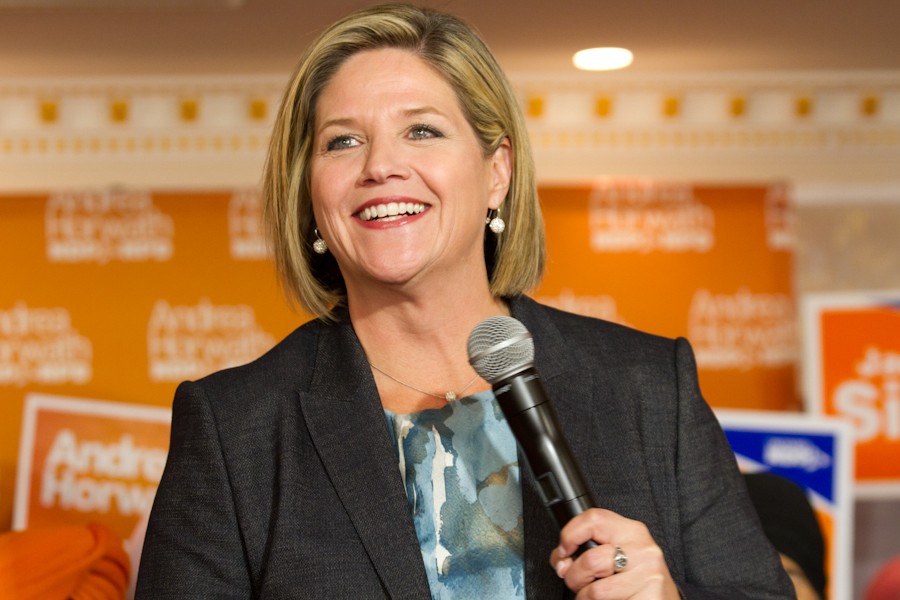
Ontario NDP leader Andrea Horwath has long championed improved healthcare for Brampton
The number peaked in the 2017 calendar year with 3,990 people being treated in hallways, which was the same year Horwath obtained her numbers and began to sound the alarm over the crisis ahead of last year’s provincial election.
The number decreased by 24 percent to 3035, last year.
The overall numbers of patients treated in hallways at Brampton Civic are as follows: 2012, 1,014; 2013, 1,793; 2014, 2,693; 2015, 3,207; 2016, 3,835; 2017, 3,990; 2018, 3,035.
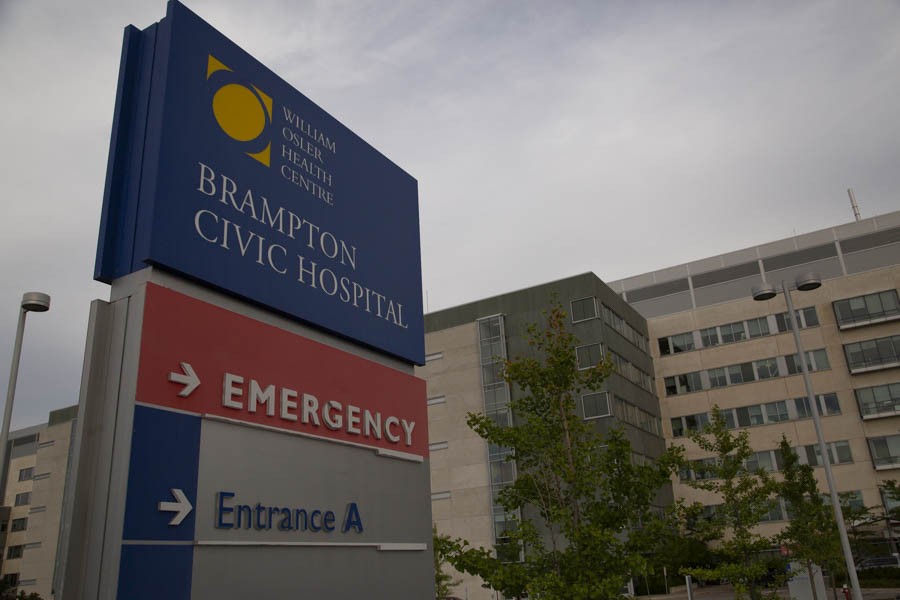
This represents a 200 percent increase from 2012 to 2018, though the number for last year has come down from the figure for 2015.
The crisis of overcrowding at the hospital is also reflected in data obtained by The Pointer for code gridlock days, hospital vernacular for when the number of patients exceeds the number of available beds and there is no capacity for new admissions.
In 2016, when data on code gridlock was first collected, the number of days spent in gridlock was 50; 128 in 2017; and 80 in 2018. The number of times the code had to be called, which can last for many days, was 18 in 2016; 17 in 2017; and 13 in 2018.
The Pointer reached out to William Osler Health System, which operates Brampton Civic, for comment Friday, but spokesperson Cara Francis said no one was available ahead of the Victoria Day long weekend.
The hospital opened in 2007 and was immediately plagued by overcrowding in the rapidly growing city. As of 2017, there were 608 beds in the hospital. After the revelation that year about the overcrowding crisis and the deplorable conditions in the city’s only full-service hospital, the Liberals under former premier Kathleen Wynne added 37 new beds to BCH. The problems persisted, however, as Brampton averages less than one bed per 1,000 residents, less than half the provincial average for hospital beds per resident.
Compared to Brampton’s lone full-service hospital, Winnipeg, a similar-sized city, has six such hospitals. The former Liberal government and the ruling PCs have often said that Brampton residents who can’t get treated at BCH because of overcrowding can go to other GTA hospitals to get care.
The city’s five MPPs were contacted by The Pointer for comment, after the new data was obtained.
“Fifteen years of Liberal governments left Brampton with only one full hospital that is chronically overcrowded and underfunded. Now we’re seeing that in 2018 more than 3,000 people were treated in hallways at Brampton Civic. We’re seeing that Brampton Civic spent 80 days – more than a fifth of 2018 – in Code Gridlock,” Brampton Centre MPP Sara Singh (NDP) responded.
Brampton North MPP Kevin Yarde (NDP) accused Premier Doug Ford of ignoring Brampton and focusing too much on cuts rather than adding beds. “He didn’t mention Brampton in his budget at all, let alone commit to the considerable health care and infrastructure investments that Brampton’s growing population needs. If Doug Ford doesn’t start taking Brampton’s needs seriously, these numbers will likely be even worse next year.”
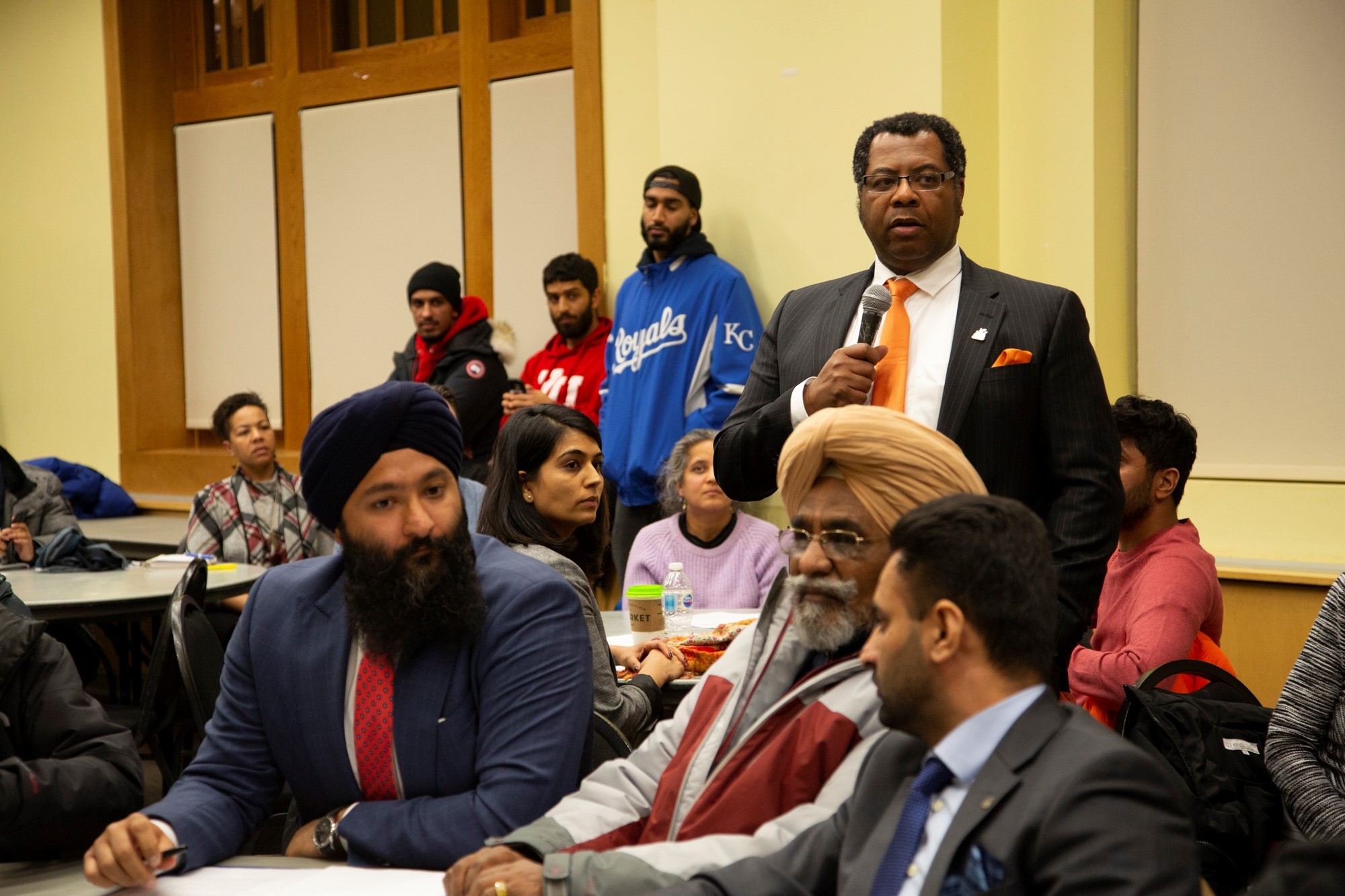
Brampton NDP MPP Kevin Yarde speaks at a local healthcare townhall
Though the province’s 2019 budget makes mention of a promised allocation of 1,157 long-term care beds to 16 hospitals in just as many cities, with an end goal of 15,000 new beds province-wide, Brampton was excluded from the plan. The beds were first promised last October when Ford’s government, less than 5 months old at that time, provided its first healthcare initiative, announcing in the fall its plan to “End hallway healthcare”. Many Brampton residents expressed outrage at the time when the city was ignored by the plan, despite being the place where the hallway healthcare crisis is most acute and where the term was popularized by the NDP during last year’s provincial election campaign.
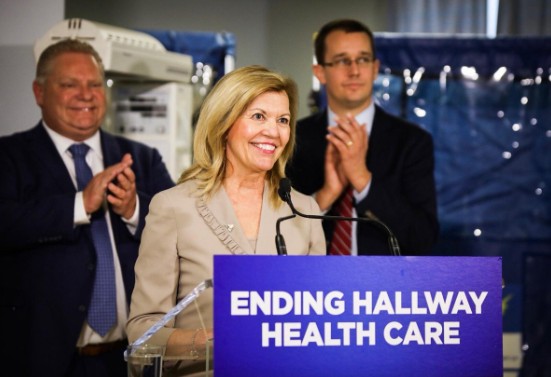
Health Minister Christine Elliott and Premier Doug Ford
As with the announcement then and the budget recently, nothing has been offered to help alleviate the the problem of hallway healthcare in the city. Brampton does not appear anywhere on the list of locations where beds will be provided, nor does it appear anywhere else in the 2019 Ontario budget.
A bill late last year tabled by the NDP, for a new hospital in the city, was killed by the PC government, including its two Brampton members, who did not support the defeated bill and have been silent or absent for votes and debate regarding their city’s ongoing healthcare crisis.
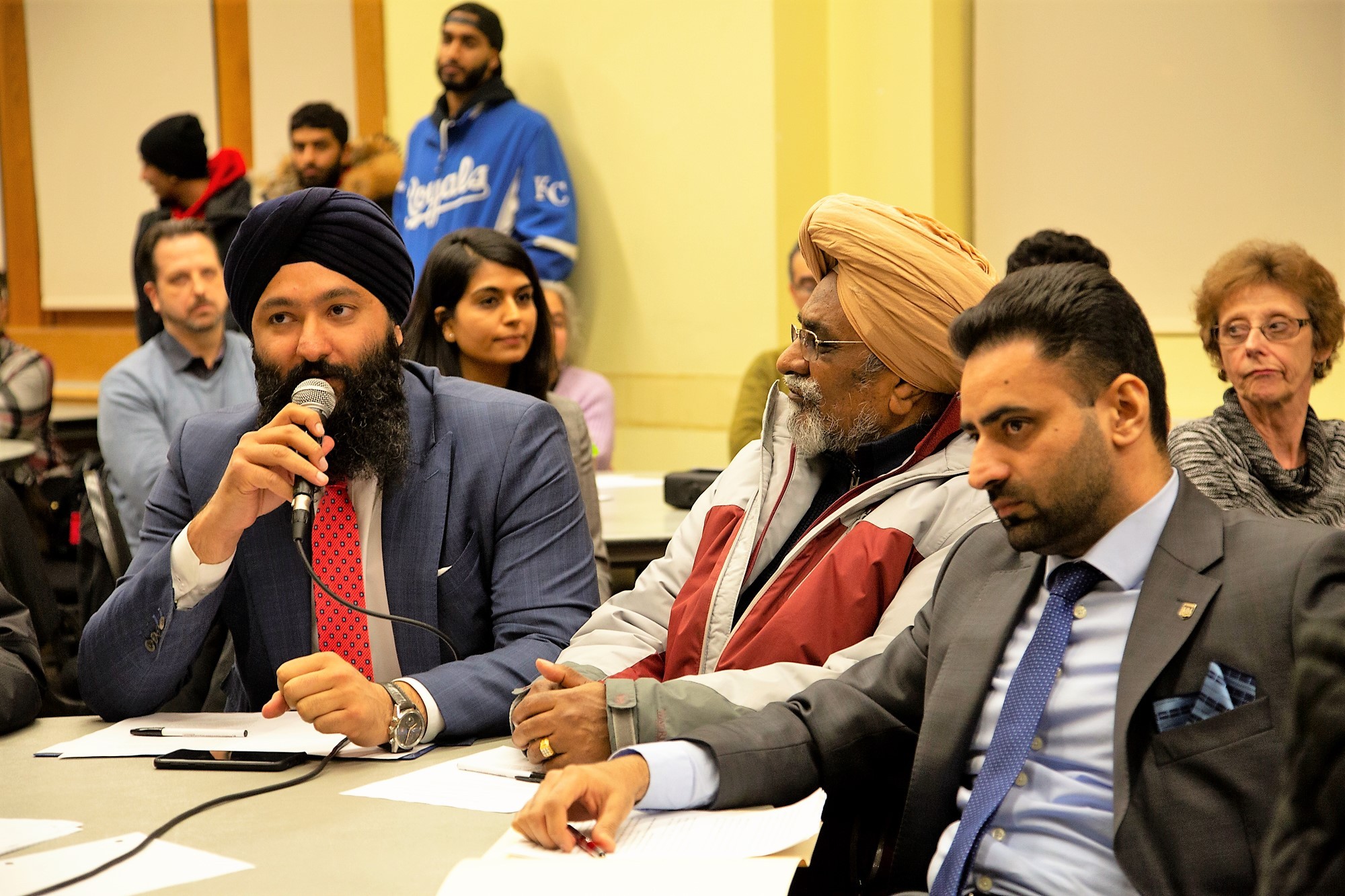
Brampton PC MPPs Prabmeet Sarkaria, left, and Amarjot Sandhu, right
The Pointer reached out to Amarjot Sandhu (Brampton West, PC) and Prabmeet Sarkaria (Brampton South, PC) to get comment about the newly acquired data. Neither of them provided a response by deadline. The PCs, after ignoring Brampton in the hospital bed allocation and defeating the effort to build a new hospital here, have introduced legislation that would dissolve Local Health Integration Networks and give Health Minister Christine Elliott the power to dissolve and appoint health agencies. The effect of this move is still yet to be determined, but many in the city have expressed anxiety about the possibility of privatization of some services, under the plan. The PCs have denied it will lead to any privatization.
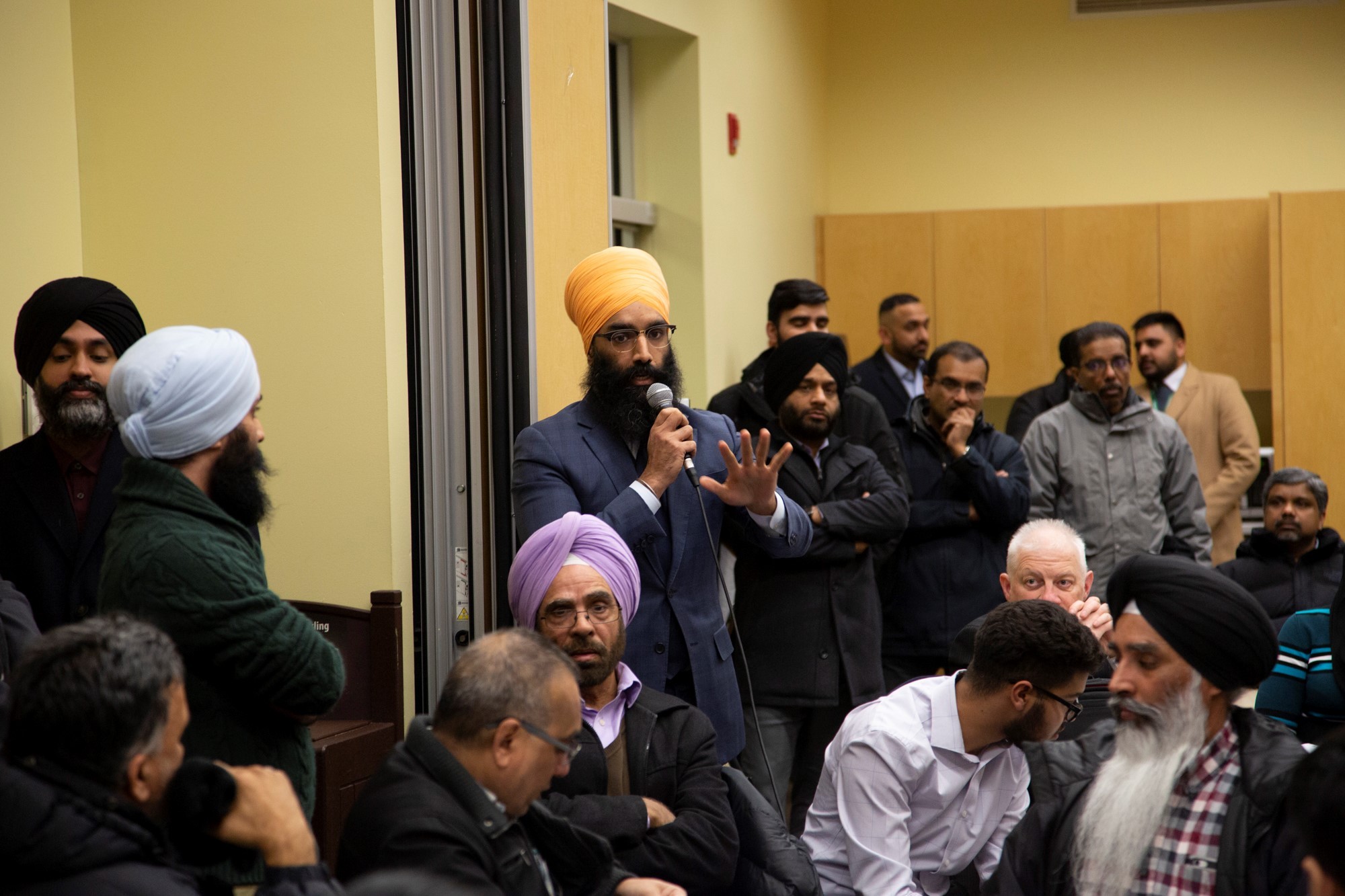
Brampton NDP MPP Gurratan Singh at a recent townhall to address the city's ongoing healthcare crisis
“New Democrats have been fighting to make sure there are three hospitals operating in Brampton,” MPP Gurratan Singh (Brampton East, NDP) told The Pointer. “But instead of backing the NDP's proposal to fully fund Brampton Civic, convert Peel Memorial Health Centre to a full-time 24-hour hospital and build a new hospital for our growing community, the Ford government used its majority to vote down these improvements.”
Email: [email protected]
Twitter: @mansoortanweer
Submit a correction about this story


